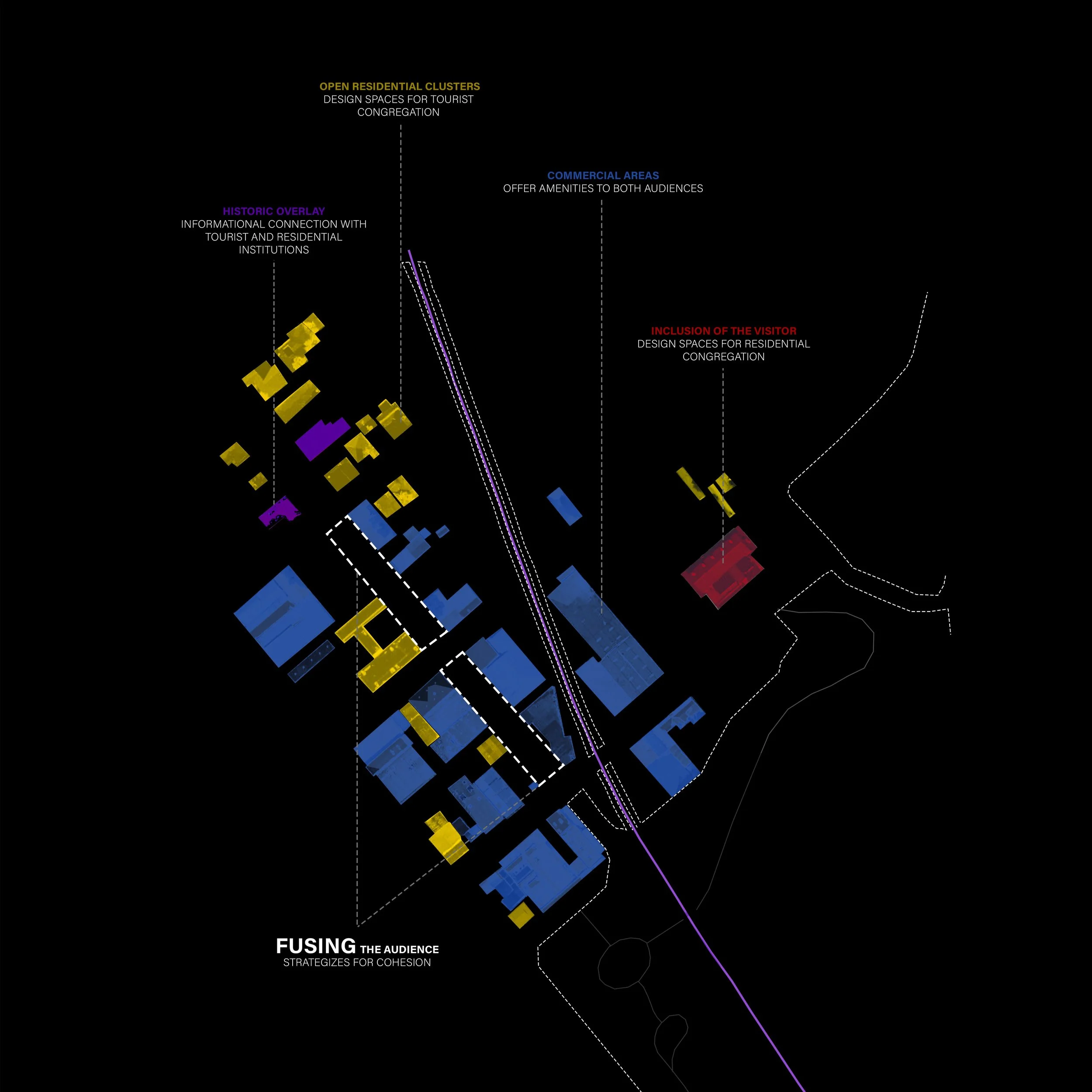Re-purposing Urban Features as a Platform to Reconnect Civilians
Designed with: Evelyn Esquivel, Michihiro Sasaki, and Madison Wood
Divided by natural barriers.
Jefferson City’s urban renovation plan proposes a network trail connecting 3 interventions to the existing historic district, acting as a device to bridge the divided territory.
With residents witnessing the dilapidation of their land by the on-going flood plain, train noise pollution, and lack of development in their historic district, this reformation intends to restore the social harmony and apprehension between residents and tourists by providing a framework built on collaboration.

Upon survey of the land, three interventions disperse throughout the grid along with a refinement of the historic district.
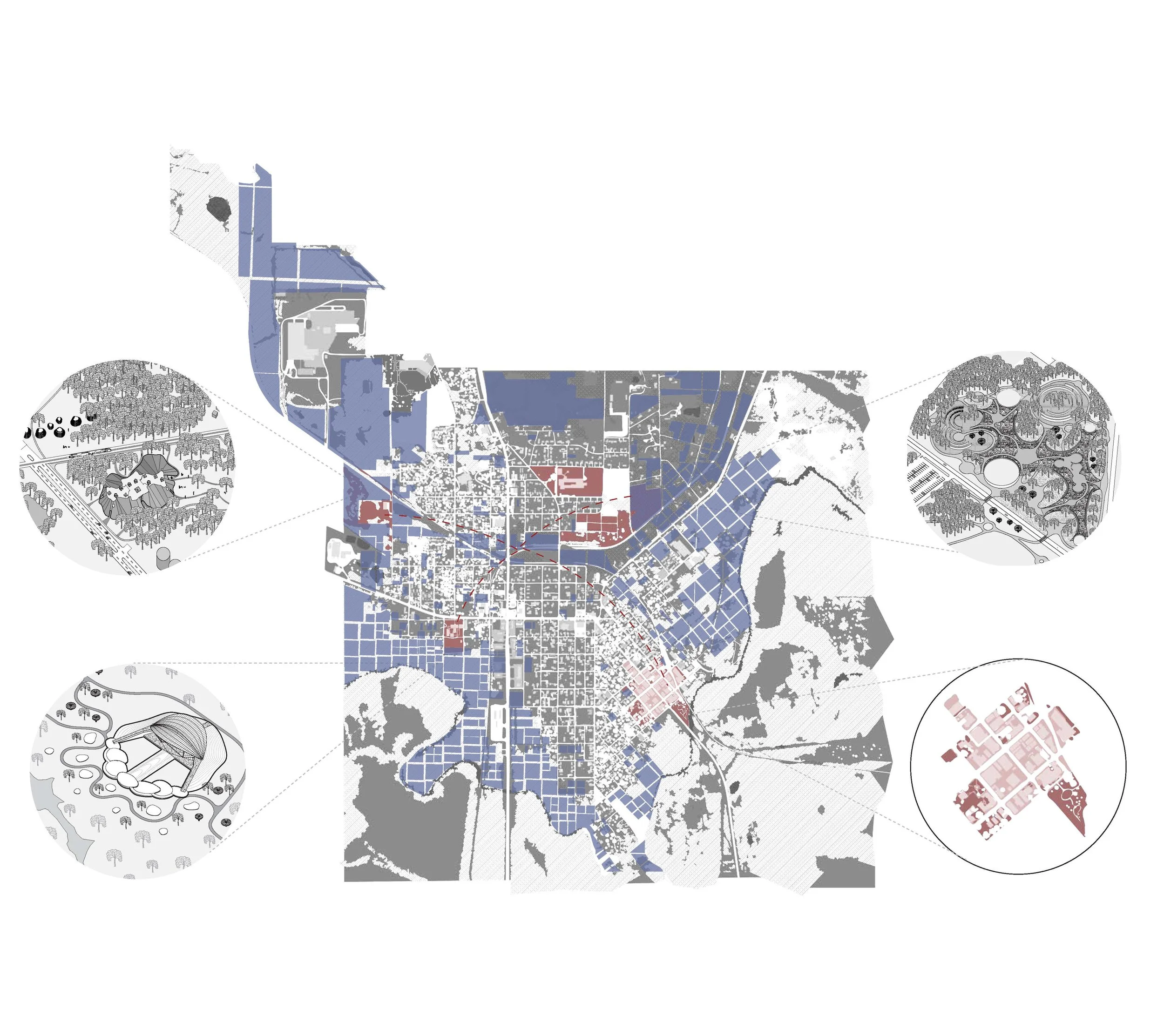
As a symbol of new foundation, each development transforms an urban disruptor into a celebrated space. Overlapping the fields of both audiences lightly engages a dialogue between the history of Jefferson’s prosperity.
Downtown Site Strategy
— By identifying the present conditions in downtown Jefferson, a plan to activate the historic district connects beyond its original borders and into the park nearby where the current visitor center resides.

The Jefferson Archival Library introduces a space for tourists and residents to form a hidden connection through an educational amenity, essentially sharing the testimonies of Jefferson’s historic groups.

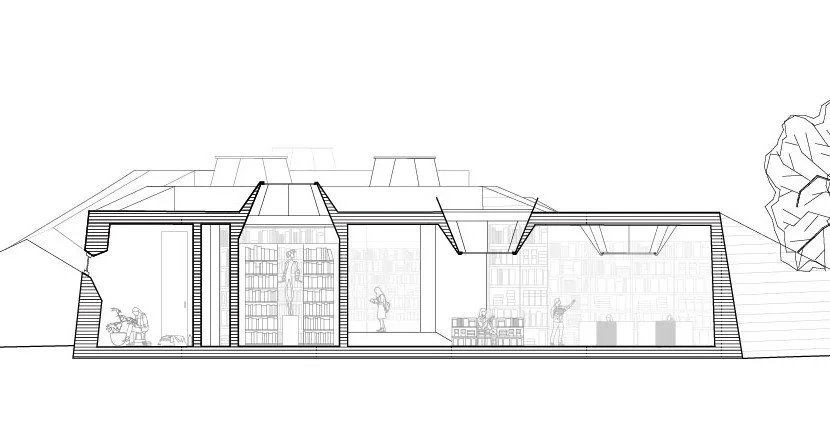

As an expansion of the local memorial park, the Oakwood Cemetery Garden redefines a graveyard experience into a celebrated space for public gatherings, alleviating the emotional experience of burial service.
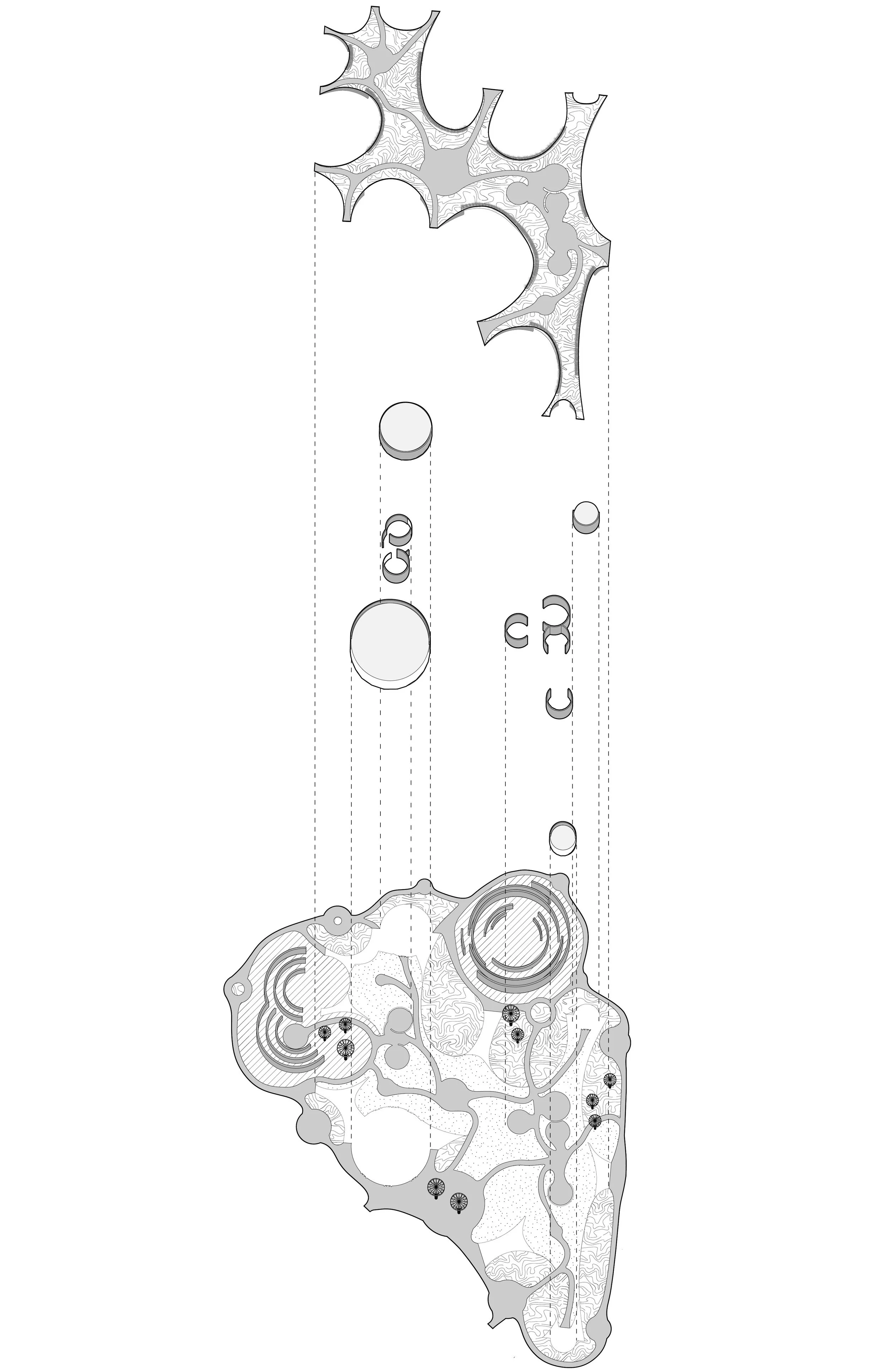

Given the ongoing flooding dilemma within city, the Flood Plain Amphitheater highlights the ground condition during flooding season, creating a water basin for recreational use.
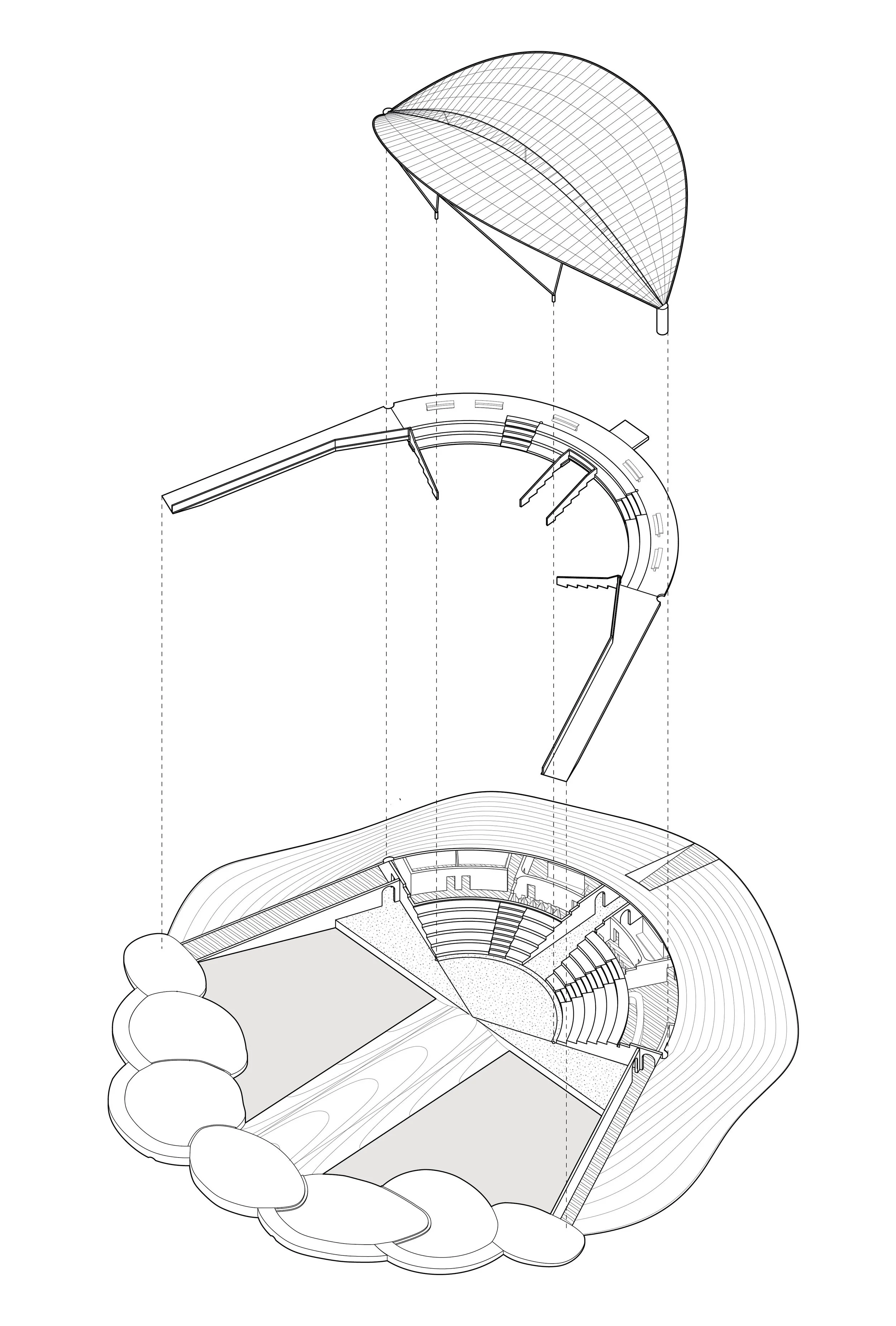
Integrating Emerging Technologies
AI Workflows for Architectural Visualization
For post-production visuals, Generative AI is used to develop iterations to conduct material research, and expedite visualization concepts during schematic process.
Taking the canny edges of the original image, Firefly generates an AI image by holding the geometry of the original while combining the new prompt, delivering a new iteration.
“an interior rendering of a minimalist cafe, frosted glass entrance doors, walnut wood interior accents, white marble floors and curved concrete walls”
Generative AI Features for Photo-Realistic Visual Assets for Post-Production Rendering
Modeling assets from scratch transforms into tedious work, allotting less time to dedicate to more significant components of projects that require attention to detail.
Prompting Generative AI to develop a photo-realistic image of a cafe menu enabled the creation of an immediate asset, ultimately reducing design time by eliminating the need for digital modeling.
“a minimalist signage menu with clear vinyl film suspended from metal bars”
VR Sessions in Blender Walkthrough via Meta Quest Pro
As a way to understand space and scale, immersive VR technology grants designers new ways to experience their designs and locate potential design problems, giving scope of experiential iterations. Blender’s built-in VR Scene Inspection add-on enables users to teleport through models by latching laser pointers to existing objects in scenes, minimizing nausea in interactive interfaces.
Growing community through innovation
In a way to resolve the tension between temporary and permanent guests, overlapping the fields of both audiences lightly engages a dialogue and appreciation for the history of Jefferson City.




